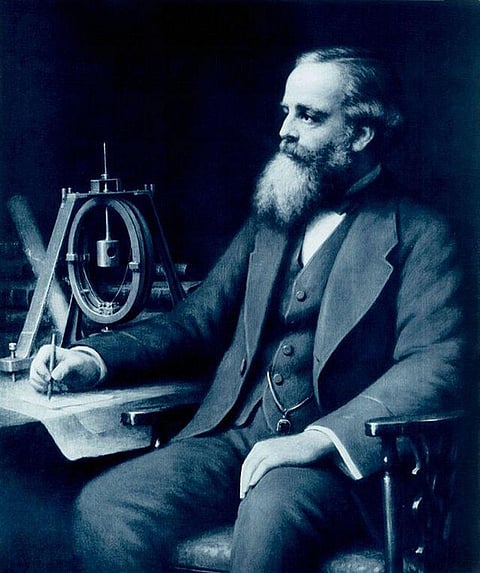
- Home
- न्यूजग्राम
- India
- World
- Politics
- Entertainment
- Culture
- Lifestyle
- Economy
- Sports
- Sp. Coverage
- Misc.
- NewsGram Exclusive
- Jobs / Internships

By- Khushi Bisht
Despite the fact that they have significantly added to the amount of human intelligence, the identities of thousands of scientists remain largely obscure. One of those several scientists was the man who is known as the "Father Of Modern Physics" and the creator of the world of electrical engineering. He's considered by Albert Einstein to be the most prominent and prolific figure in the history of physics.
He is James Clerk Maxwell, and his life is worthy of praise and recognition.
Follow NewsGram on LinkedIn to know what's happening around the world.
James Clerk Maxwell as a young man. Wikimedia Commons
Born on June 13th, 1831, Scottish physicist James Clerk Maxwell is one of the three most prominent and noteworthy scientists in history. For the profound essence of his efforts and innovations, his name ranks after Mathematician and Physicist "Sir Isaac Newton" and Theoretical Physicist "Albert Einstein". Many contemporary physicists view him as a nineteenth-century scientist who had the biggest impact on twentieth-century physics.
Maxwell was born into a middle-class family and had been an innovator since he was a kid. His priorities were much broader than the school curriculum, and he paid no attention to his grades. He wrote and published his very first research article at the tender age of 14. Throughout his life, he was fascinated with mechanical structures and mathematics, which proved to be extremely useful in his numerous studies.
Plaque showing Maxwell's equations at the Edinburgh statue. Pixabay
Through his equations (Maxwell's Equations), he paved the way for modern physics, inspiring and influencing many scientists, including Einstein, to develop his "Theory of Relativity." The most notable contribution of James Clerk Maxwell is his theory of "electromagnetism" (1865) which states that light, electricity, and magnetism are all generated by the same force. This was deemed by many great physicists, including Albert Einstein and Max Planck, to be the greatest scientific discovery of the twentieth century.
In addition, Maxwell developed the "kinetic theory of gases," which has since become one of the most significant theories in modern physics. His concepts also laid the foundation for "Quantum Mechanics," a significant breakthrough in twentieth-century physics.
The wave equations for electromagnetic waves. Wikimedia Commons
ALSO READ: Nikola Tesla: A Man Ahead Of His Time
Maxwell also created the world's first colored image after realizing that the human eye could only discern three colors, Red, Blue, and Green. The three types of cones in the human eye function together to give you the ability to see billions of different colors in the world.
Maxwell carried out an experiment to demonstrate that any color can be created by combining red, green, and blue light in the right proportions. He produced a colored photograph of a tartan ribbon by layering red, blue, and green filtered photographs together.
Tartan Ribbon, photograph taken by James Clerk Maxwell in 1861. Considered the first durable color photographic image, and the very first made by the three-color method Maxwell first suggested in 1855. Wikimedia Commons
But it was Maxwell's electromagnetism discovery that cemented his place among history's greatest scientists. Radio, tv, motors, microwaves, speakers, and MRI machines would not exist without Maxwell's theory of electromagnetism.
The world lost this brilliant physicist on November 5, 1879. However, he had already made an indelible mark on the world of physics. About the fact that his identity is not as renowned as that of other scientists such as Nikola Tesla, Albert Einstein, and Sir Issac Newton, Maxwell's discoveries were revolutionary.
